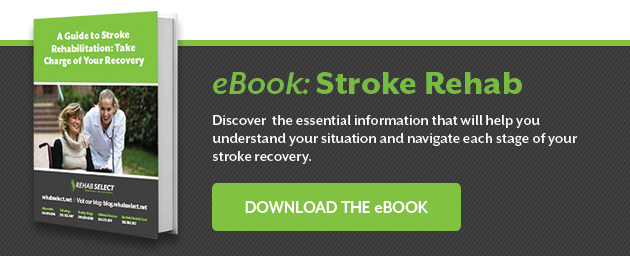
As the command center of your body, the brain is an intricate and highly durable organ. However, when a stroke happens, it requires targeted and consistent treatment to bounce back.
For example, different areas of the brain can be seriously impacted by stroke — causing significant communication challenges. Fortunately, speech therapy can help patients regain the ability to understand others, talk, remember, and communicate.
Often the degree to which the patient's cognitive abilities were affected cannot be immediately determined. However, once the patient is stabilized, physicians are able to better assess the damage the brain has sustained and begin speech therapy after stroke.
As healing begins, exercises for stroke patients are incorporated to help restore communication abilities that were lost as a result of the acute episode of care. And, with time, patients can regain the ability to enjoy fulfilling conversations with their loved ones
The Purpose of Speech Therapy After Stroke
Speech therapy plays a highly significant role in helping stroke patients relearn how to communicate in a clear manner. The individual will typically begin working with a speech therapy team almost immediately, often even in an altered state of consciousness such as a coma. As the patient stabilizes, the therapist can determine the degree of speech therapy required.
Developing communication skills is essential to helping the patient be as independent as possible. Reading, writing, listening, speaking, and swallowing are all areas that are addressed during speech therapy. Every patient is different and will need more help in some areas over others, and the term of speech therapy after stroke can vary depending on the severity of the injury severity and timeline of the condition.
Speech Exercises for Stroke Patients
Though often incorporated with other treatments, speech therapy after stroke involves several unique and routine regimens. They include:
- Controlled breathing: These routines are incorporated into speech therapy after stroke to strengthen breath control and support for speech production. Speech therapy professionals will typically have patients take a deep breath, hold it for a few seconds, then slowly exhale, and repeat this process several times. Blowing up a balloon and blowing bubbles are also incorporated to improve respiratory strength.
- Tongue and lip exercises: These simple movements improve strength and coordination of the tongue and lips. They involve sticking out the tongue and moving it from side to side, up and down, and in circles. For lip exercises, speech therapy teams will have patients practice puckering and smiling, and say "ooo" and "eee" sounds alternately.
- Articulation coaching: The point of this exercise to enhance clarity of speech by practicing specific sounds. This involves repeating syllables like "pa," "ta," and "ka" in rapid succession. Trained professionals will have patients slowly and gradually increase their speed, and practice tongue twisters to focus on clear articulation.
- Voice training: This speech therapy treatment supports vocal strength and control. It involves practicing varying pitch and volume by saying “ah” in a low, medium, and high pitch. Speech therapy professioanls will also have patients hold a vowel sound (like “ee” or “oo”) for as long as possible, aiming for sustained and strong vocal output.
- Word and sentence repetition: Repeating certain words and phrases advances speech fluency and word retrieval. Patients usually start with simple words and gradually move to more complex ones. They typically repeat each word several times, focusing on clarity, and progress to short sentences and phrases.
Signs of Success
To loved ones and caregivers, speech therapy after stroke may seem like a lot of repetitive and slow-going practices. You may not notice the return to previous communication skills for some time, and that can feel discouraging. Rest assured, though, progress is being made.
The individuality of each case makes it difficult to gauge progress, but by knowing what to look for, you can recognize successes in regaining communication skills through speech therapy.
- Ability to communicate
Even the slightest difference in communication skills should be a celebrated success. Speech therapy helps find new pathways within the brain by which communication skills can be recovered and honed. Once the patient can communicate their needs effectively, recovery is well on the way. - Vocal modulation
Appropriate vocal modulation can be difficult for a person after stroke. The patient may speak extremely loudly or barely above a whisper. When you notice the ability to communicate at an audible and acceptable level, you know progress has been made. - Recognizing cues
Recognizing verbal cues and responding accordingly is a huge cause for celebration! This means the patient can comprehend what is being said and reply in kind. This signifies an important success in the stroke patient’s speech therapy.
Finding Speech Therapy in Alabama
The timeline to recovery isn’t linear. But with sufficient speech therapy, stroke patients can recover most of their communication skills. ehab Select boasts five top-quality locations across Alabama for getting started on speech therapy after stroke. Contact us today to get started.





